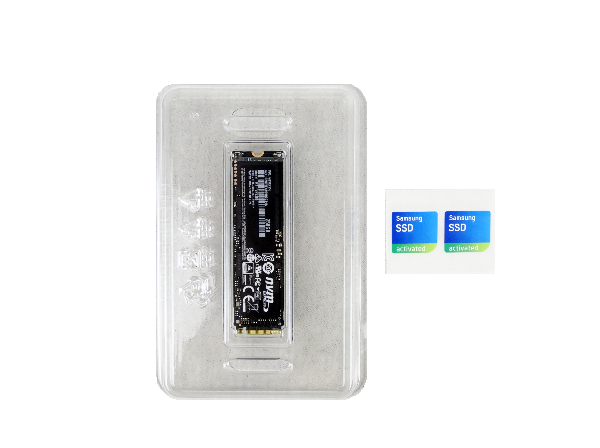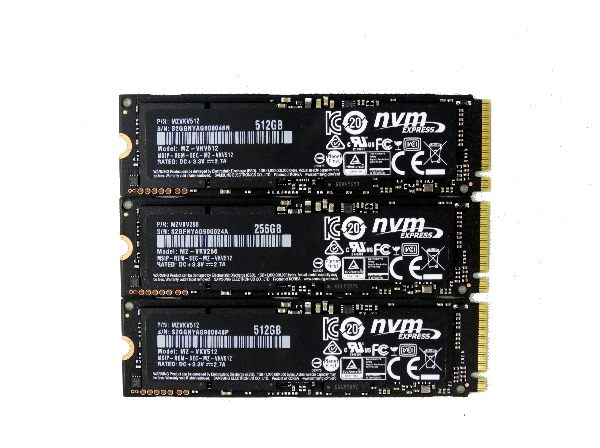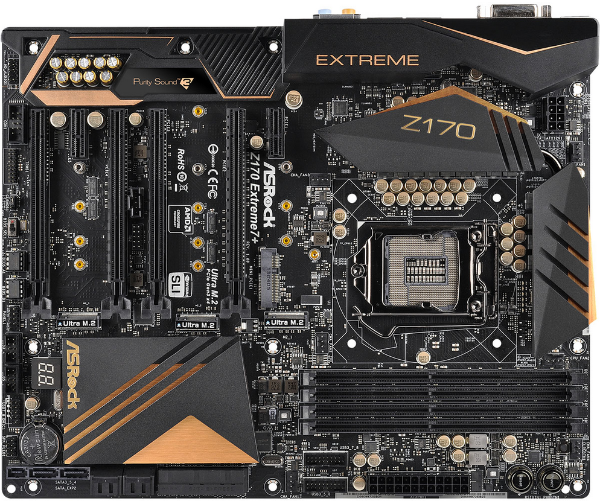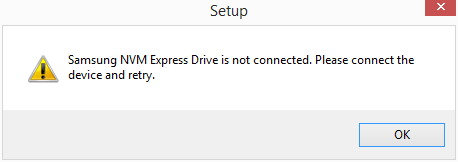Samsung 950 Pro SSD Review
NVMe in the M.2 form factor is finally a reality for desktop enthusiasts. Retailers begin selling Samsung's 950 Pro today, and we already have three drives in-hand.
Why you can trust Tom's Hardware
A Closer Look

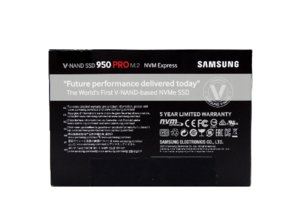
Retail M.2 NVMe is here! Samsung's 950 Pro changes the game, and the company isn't afraid to say so on the box. Since this product only boots on two chipset families, though, and your BIOS settings need to be configured in a specific way, we worry that some buyers will run into problems with the initial configuration.
Our samples arrived before the retail products, so this may not be the final accessory package. Hopefully Samsung includes some type of setup guide for its customers.
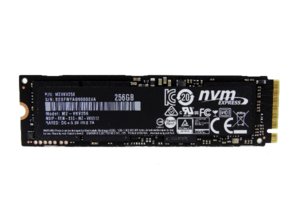
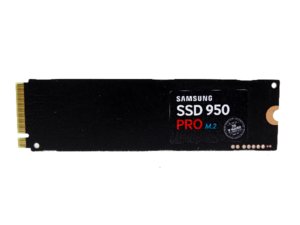
Both capacities employ the M.2 2280 form factor. This is currently the most common size for storage. Several Z97, X99 and Z170 motherboards already have M.2 slots that accommodate the 950 Pro. Samsung doesn't sell a M.2-to-PCIe adapter, but several are available from other companies. The adapter puts your M.2 SSD in an expansion card that plugs into PCIe. Some adapters add a heat sink to help with cooling. The downside is that you consume a slot that might have otherwise been used for a second graphics card.
All of the drives are single-sided. M.2 has specifications for both single- and double-sided sticks, and over time this will become an issue for upgrading notebooks. We use a Lenovo X1 Carbon Gen 3 for some M.2 battery life testing, and it only works with single-sided drives.

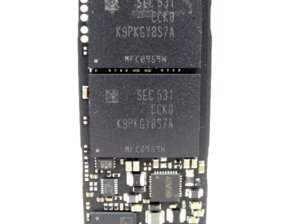
Samsung uses its UBX controller and pairs it with 512MB of LPDDR3 running at 1600 MT/s. The flash is the company's latest 3D V-NAND with 32 layers. Samsung doesn't provide specific manufacturing information, but instead cites what class of lithography the flash is built on. V-NAND is still using 3xnm-class technology, similar to what was introduced last year on the 850 Pro.
Installation Notes
We normally don't go into a lot of detail on SSD installation. But the 950 Pro brings NVMe to the mainstream, and not everyone will do their due diligence before buying it. Because this drive is destined for retail shelves, we wanted to provide more information, given the wide audience appeal.
Intel 9- and 10-series motherboards are required to boot the 950 Pro. There is only a handful of Z97-based motherboards that support full PCIe 3.0 x4 performance at their M.2 slot. We've used ASRock's Z97 Extreme6 for M.2 reviews because it comes with the company's Ultra M.2 slot, which is PCIe 3.0 x4 attached directly to the CPU. We tested the 256GB and 512GB 950 Pros with the same board to keep our comparison results balanced. We also ran some single-drive tests on ASRock's Z170 Extreme7+ motherboard, and the 950 Pro performed slightly better, even though the PCIe connectivity routes through Intel's PCH.
Get Tom's Hardware's best news and in-depth reviews, straight to your inbox.
We also ran two 950 Pro 512GB drives in RAID 0 using Intel's Rapid Storage Technology. Z170 motherboards like the ASRock Z170 Extreme7+ have two or more M.2 slots capable of PCIe 3.0 x4 bandwidth. To use RST RAID 0 and still boot, the M.2 slots must come from the PCH, RAID Mode must be enabled in the BIOS and the array must be configured either inside the operating system or at the BIOS level. RST RAID 0 supports TRIM and SCSI UNMAP commands, so your array operates at high speed over extended periods of use.
The 950 Pros do not have a heat sink over the controller. Under normal use, thermals shouldn't be a problem though. In fact, Samsung deliberately tuned the 950 Pro's throttling behavior. This has been an ongoing struggle for the company. When we first tested its SM951 in a Lenovo X1 Carbon Gen 3, we observed that an artificial limiter slowed sequential and random write performance. Lenovo released a firmware update that raised the thermal ceiling before throttling kicked in, while the drive we sourced from RamCity didn't have the issue at all. Throttling can still become an issue under heavy workloads and undesirable conditions, but that's the drive protecting itself from damage.
ASRock's Z170 Extreme7+ motherboard has three Ultra M.2 slots that support up to 22110 form factor drives. The trio routes through Intel's PCH, so performance is limited by the DMI. This interface is shared with SATA, USB, HD Audio and any other peripheral attached to the hub's I/O. PCIe switches are used to increase the number of available lanes, but bandwidth does end up getting shared by quite a few devices.
This motherboard, along with most others sporting M.2, packs connectors between the PCIe slots. Double-slot graphics cards impede airflow and create a stagnant area underneath, which could become an issue. Fortunately, the M.2 slot closest to the CPU doesn't have that issue. If you're using water cooling, pay particular attention to the temperature of components like M.2 SSDs. Although the drives monitor thermal performance, there's no reason to invite throttling when ample circulation is all you really need.
Intel Rapid Storage Technology RAID
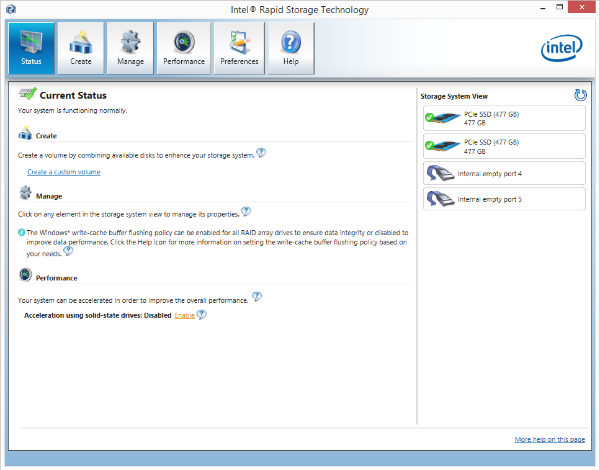
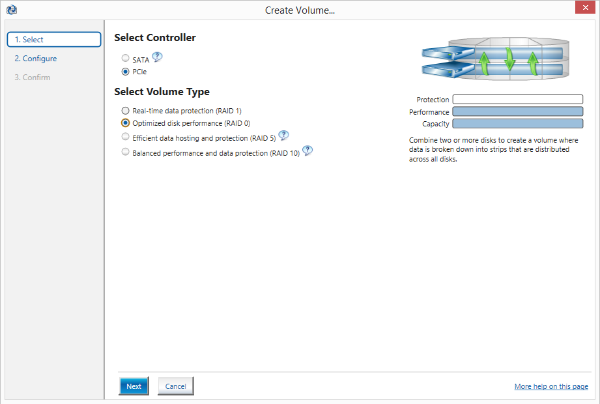
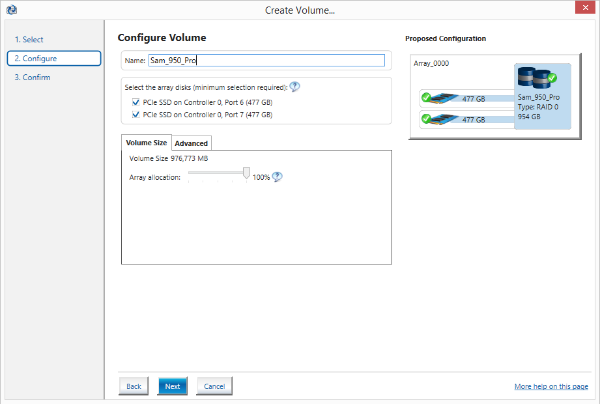
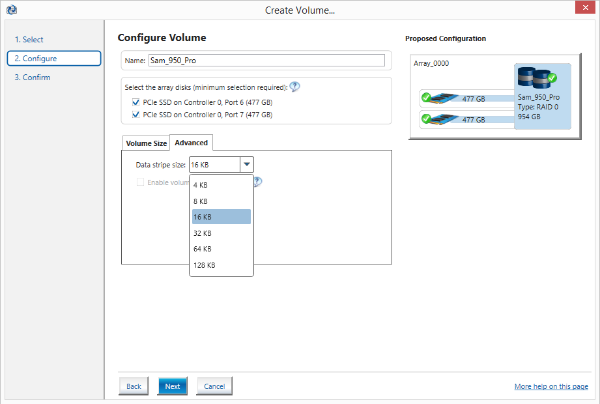

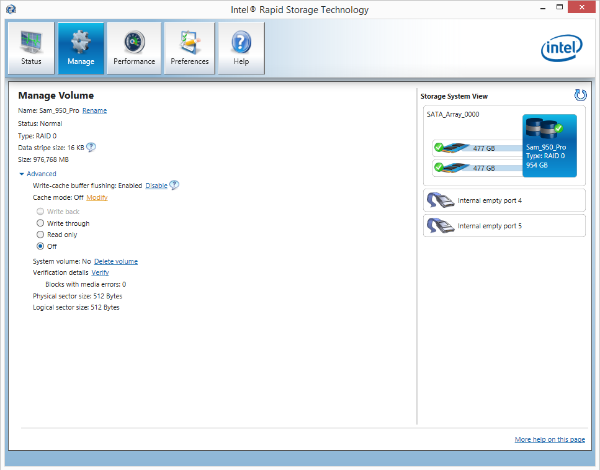
Intel's RST has become a powerful tool for increasing storage performance. RST is supported by all of the company's enthusiast-class chipsets, but PCIe RAID is only available on Z170 (for desktops) at this time. The technology enables RAID 0, 1, 5 and 10.
Since the ASRock Z170 Extreme7+ has three M.2 slots, enthusiasts can run a three-drive RAID 5 array if they so desire. However, most power users will utilize a single SSD, two in RAID 0 (double capacity and performance increase) or RAID 1 (mirrored for redundancy). The images above show a striped configuration built in Windows with the Rapid Storage Technology software interface. You could even build an array in Windows from a previous installation and then install Windows on the fresh array. You can also set up an array in your BIOS by using the CTRL+I key combination to bring up the RST configuration screen during boot-up.
Intel naturally lets you pick the right stripe size for your array. The default is 16KB, and that's optimal for balancing sequential and random performance. Smaller stripes yield slightly better random performance, while a larger stripe size delivers slightly better sequential performance. Two 512GB 950 Pros with a 16KB stripe setting maxed out the DMI on our Extreme7+ motherboard, and that's the configuration you'll see us use for our RAID 0 testing.
It's also worth noting that the latest version of Intel's RST software allows PCIe drives to act as a cache for hard drives. We could even use the driver to make a tier 0 cache for SATA SSDs connected to the platform controller hub. The cache is limited to 64GB, so if you use an SSD larger than that, the remaining capacity can be partitioned and used on its own.
In RAID, the 950 Pros appear as an Intel software array. Samsung's driver does not recognize them, preventing you from installing it. The same thing happens to Intel's SSD 750s in RAID. Until Samsung adjusts its software to support RAID arrays, you'll have to use Microsoft's NVMe driver built into Windows 10, 8.x and available as a download for Windows 7. Per-drive performance drops, unfortunately, which will become obvious in certain workloads when we compare a single 950 Pro to two in RAID 0. Microsoft's implementation is more conservative, serving as a catch-all to support all revisions of NVMe. It's good enough to get your system up and running, basically.

Chris Ramseyer was a senior contributing editor for Tom's Hardware. He tested and reviewed consumer storage.
-
alidan you need to had a standard hdd to some of these, such as the gaming benchmark, as i want to say most of us dont have money for a ssd game drive, but a 4tb drive that can almost hold every game you own if you install everything, that's more readily available, apposed to the same price for 1/8th the space.Reply -
Larry Litmanen I always wondered why was M.2 designed to lay flat on the motherboard and not sideways like RAM. Wouldn't you save a lot more space on the mobo, plus if it is sideways you can easily find a spot for it on MITX boards.Reply
Also, if i have a modern motherboard (i have MSI Gaming 5, Z97) do i need to go into the BIOS and change something if i want to install this M.2 NVMe SSD.
I know you had to do something on older mobos when installing an SSD. -
Larry Litmanen Replyyou need to had a standard hdd to some of these, such as the gaming benchmark, as i want to say most of us dont have money for a ssd game drive, but a 4tb drive that can almost hold every game you own if you install everything, that's more readily available, apposed to the same price for 1/8th the space.
I game a lot and i have 850 Pro in 256 GB capacity. You don't really need that much space for games if you keep only 2-3 games installed at once. I play one game at a time, when i finish i just uninstall it. What's the point of saving it on PC if i will not play it again ever or at least for a while.
-
jtown80 alidan... no one wants reviews of standard Hard drives. Your behind the times if your still focusing on them and it is pointless to do benchmarks on them.Reply -
CRamseyer Hard drive performance barely even show up on the results when we show throughput performance. The reverse happens in the latency tests, the HDD lines are so long you can hardly see the NVMe performance.Reply -
rgd1101 Can you check the temp and power usage?Reply
Perform much better on the Z170 then on the Z97 reviewed at anandtech.com
Wonder how it perform on an AMD motherboard. -
tom10167 Very cool, I was/am excited for this. However the real world bencmarks say it all. Best case scenario 12 seconds on a 6 minute job is not much and many of those tests were showing half a second difference in performance. Nowhere near good enough for me. Still a nice step but I'll wait for cheaper m2 drives.Reply -
rgd1101 850 PRO EVO is cheaper. Wish they compare both 512GB m.2 and the SATA drive.Reply
Real world peformance probably close. -
arossetti I'm glad this form factor is starting to take off and is reasonably priced. Less cables and power connectors to muck up a build.Reply
